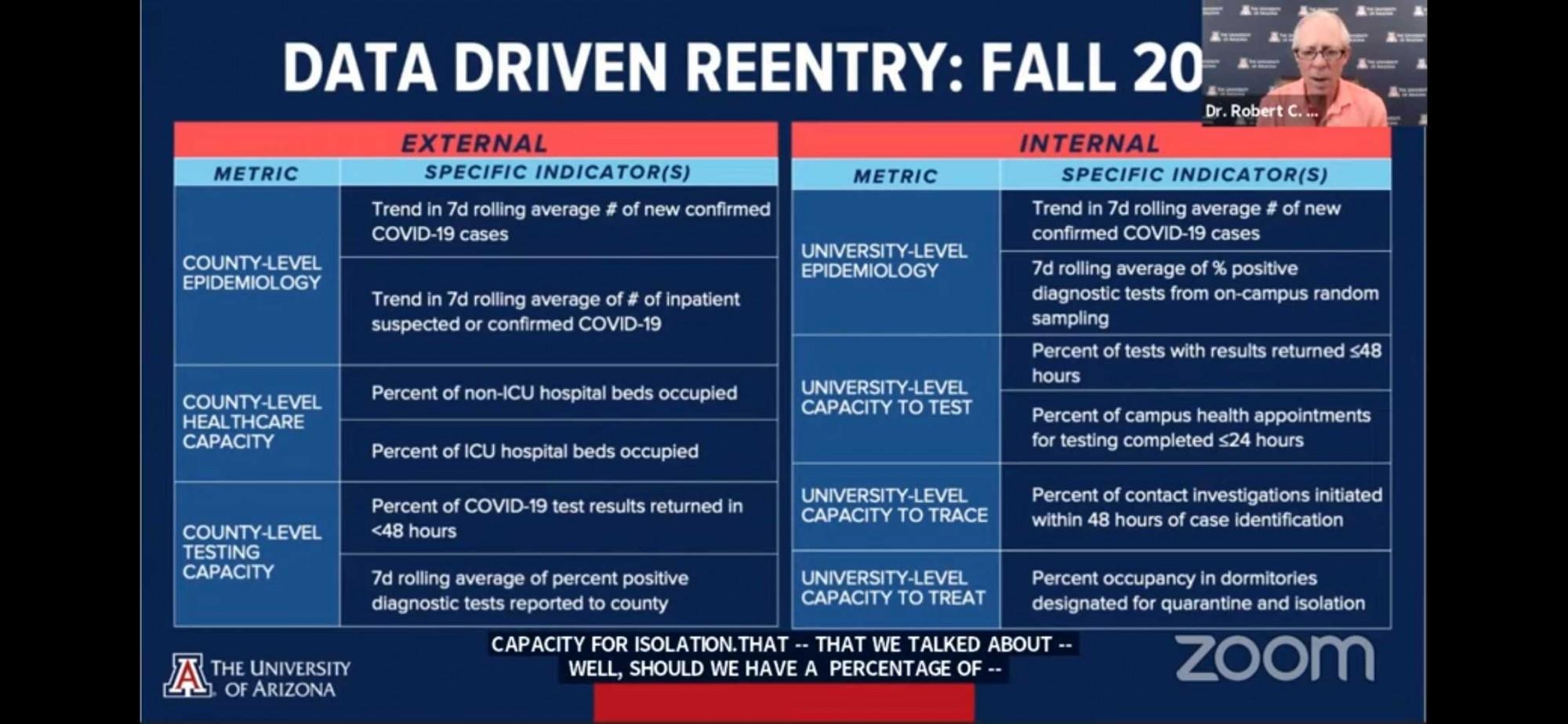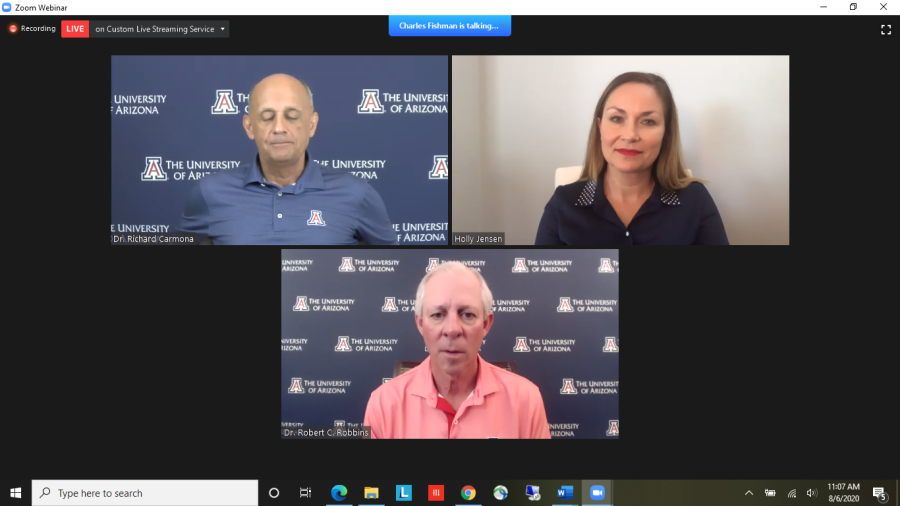University of Arizona President Dr. Robert C. Robbins said at Thursday’s reentry briefing that after receiving input from UA faculty he has decided to increase the amount of time for each phase for reentry and base each’s length on the health data as it develops.
While Robbins said at last week’s July 30 briefing that each phase would be one week, a week later he said each will likely be between two and three weeks based on counsel from the UA College of Public Health, with whom he said he met yesterday.
This also comes after the Coalition for Academic Justice at UArizona released a statement criticizing Robbins’ decision, saying the decision to reenter the campus in this manner was out of line with public health recommendations.
RELATED: CAJUA sends open letter to President Robbins, Eller College offers a humane financial plan
“Despite numerous warnings from experts from the UA College of Public Health and in Pima county, the UA president remains tied to his administration’s plan to bring 20,000 students back to campus and ramp up in-person classes by Labor Day,” CAJUA said in the Aug. 4 press release.
CAJUA also stated in the press release that in a Faculty Senate meeting Tuesday, Aug. 4, senior administration members “failed to justify their calendar-based re-entry plan” and that experts from the Mel & Enid Zuckerman College of Public Health said the three weeks of gradual reentry was “not sufficient time to evaluate how and if the plan is working.”
Robbins addressed these concerns during the briefing.
“This was brought up at the Faculty Senate this week around public health and the experts — ‘You’re just making willy-nilly decisions not consulting our faculty, so therefore you are violating shared governance policies and good practices.’ We listened to our experts. We’ve been working with them the time and we’re happy to have them be part of the process.”
Reentry Task Force Director Dr. Richard Carmona presented a slide he said came out of the collaboration with UA public health experts that included a list of metrics administration will analyze when making decisions in terms of the length of each ramping up phase and what will determine if they ultimately need to ramp down.

The slide, titled “Data Drive Reentry: Fall 2020,” included a list of metrics, such as “trend in [seven-day] rolling average [number] of new confirmed COVID-19 cases” and “percent occupancy in dormitories designated for quarantine and isolation.” However, the slide did not include exact cut-off statistics that would immediately trigger a shutdown of in-person courses.
Carmona said on a separate document that the administration is using some specific numbers internally.
“The idea today was to be able to present to the public that conceptually we move from a more macro approach to a more micro approach and get more granular as we go on,” Carmona said. “We are going to get more granular as we learn more about this virus and how we can use the data.”
In the same press release, the coalition also announced UA employees will be forming a “wall-to-wall” union following “numerous unsuccessful attempts to work with senior leaders throughout the spring and summer.”
CAJUA announced further details at the press conference Wednesday, Aug. 5. Robbins said he supported the decision to unionize.
“If they think that unionization is the way they want to go, I fully support whatever the faculty chooses to do,” he said. “I have been accused of hating the faculty – I love the faculty … Whatever the faculty think is best for them, I am for it.”
Robbins has also received criticism for the deal with Ashford University, an online school that will now serve as the UA Global Campus. Robbins said he believes he made the best decision for the university.
“Not everybody is going to agree with every decision that I make,” Robbins said. “But I try to listen to people, take under advisement what their concerns are, and I made the decision because I think it is in the best value and future of the university to move forward with this deal.”
To view the full reentry briefing, visit the UA’s YouTube channel.
Follow Sam Burdette on Twitter









